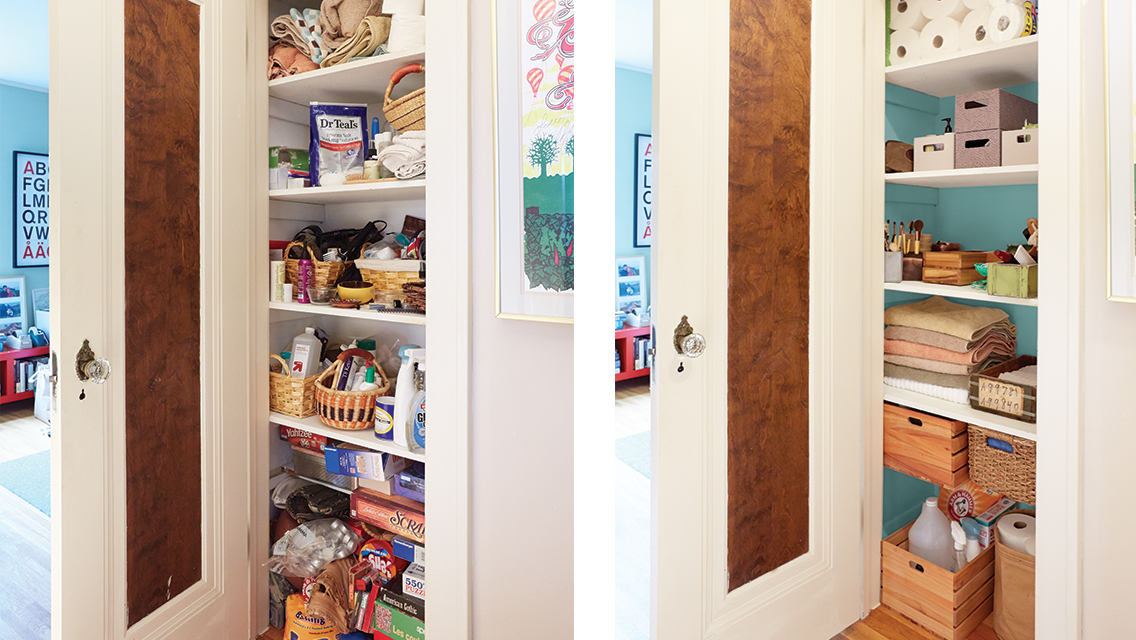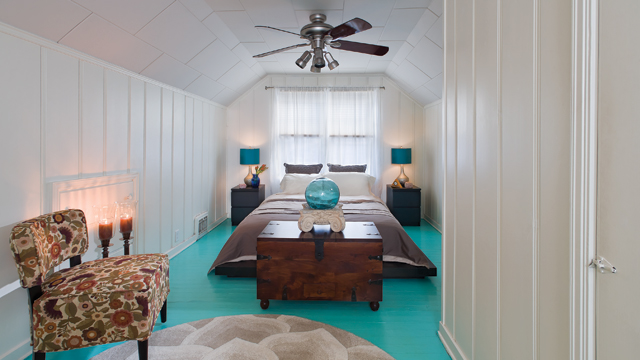While some people actually enjoy the act of paying bills, most of us are stressed by it — beginning with wondering where that phone bill is, anyway.
What’s more, not all bill-paying stress is related to money. A lot of anxiety comes from the resistance we feel to wrestling with a chaotic stack of paperwork whose next-step requirements aren’t clear.
I worked with Heidi Wachter, Experience Life’s staff writer, to construct a stress-free system for tracking and paying her bills, and for organizing her office paperwork. Our goal was to create a space that would make it easy to handle those tasks on time with minimal thought or worry.
Here’s how we tackled the job.
Sort It Out
One powerful motivator for reworking a less-than-ideal bill-paying system is to consider what our current approach costs us in terms of time, energy — and perhaps money.
Heidi, for example, kept the due dates for her bills in her head — and left unpaid bills on her desktop as a visual reminder. That worked well enough for her that she didn’t encounter a lot of late fees, but energetically speaking, her bills were taking up physical and mental real estate they didn’t deserve.
Having a big stack of bills cluttering a desktop — and staring us in the face — can be a real source of stress. And for anyone with a less-than-perfect memory, such systems can carry significant monetary costs, too. All it takes is a single due-date slip to generate painful overdraft fees and potentially catastrophic interest-rate hikes.
The first step in avoiding such troubles? Setting up a solid mail-sorting system — one that encourages you to open and separate bills as soon as they arrive, and that ensures they have a consistent place to land. You don’t want your accounts-payable items getting buried under a pile of catalogs and bank statements, or tossed in with other to-do items, like vehicle-registration reminders and wedding RSVPs.
To create a better bill-paying setup for Heidi, we needed to do two things:
1) Create a receptive space for mail sorting and paper organizing.
2) Create a reminder system that would keep her on top of due dates —without taking up space in her brain.
Set Up Space
Although Heidi typically dropped all her mail on her desktop, she often sat down to pay bills at the kitchen table. So we wanted to create a mobile system that worked with her style.
We started by decluttering and reorganizing her already-tidy office so she’d have easy access to bills, but wouldn’t have to look at them while she sat at her desk.
Heidi had an attractive vintage metal cabinet — but it was nearly impossible to open. So, she had stopped using it and kept files in a small lock box instead.
We moved the old file cabinet to the basement for archived-file storage. In its place we installed a vintage nightstand with room for two easy-access file boxes: one for statements from revolving accounts (records of bills already paid), the other for reference materials (e.g., 401(k) statements), plus research and project files.
Next, we sorted all Heidi’s current files and mail into categories:
1) “To Store” (anything she wanted or needed to keep for reference, but that required no specific action)
2) “To Research” (roof-repair quotes, vacation options)
3) “To Do” (forms to fill out, correspondence requiring a response)
4) “To Pay” (bills)
From there, all “To Store” items went into appropriately labeled conventional files in one file box.
All “To Do” and “To Research” items got placed in clearly labeled, transparent plastic file folders and stored in Heidi’s desktop organizer.
All “To Pay” items went into a trio of antique cigar boxes (one for bills; one for calculator, check register, and stamps; one for office supplies), which fit nicely into the stand’s top drawer. And once Heidi had programmed her bills’ due dates into her smartphone (along with advance alerts), she felt perfectly comfortable stowing them there.
Cultivate Confidence
Heidi can now grab her mobile bill-paying system — including the cigar boxes and the statement-storage file box — and easily transport the whole collection to the kitchen table and back again. And when she isn’t organizing or paying her bills, it’s easy for her to confidently put the whole system away.
That “away” part scares many people, particularly those for whom anything out of sight is as good as forgotten.That’s why a reliable reminder system is critical.
You can create your payment-due notations on a wall-mounted calendar, paper planner, bulletin board, handheld device, sticky notes, or whatever works for you. The important thing is to get the due dates (and balances, if relevant) posted in a place where you’ll see them, ideally as soon as bills arrive.
To simplify matters, consider consolidating your payments into batches — paying them on only the 1st and 15th of each month, for example.
Once you know when all your bills are due, and have confidence in a system that makes scheduling, paying, and filing them easy, you’ll recover more than free desk space — you’ll also reclaim your peace of mind.
(For more helpful tips and inspiration on decluttering your home office, see “How to Declutter Your Home-Office Desk.”)




This Post Has 0 Comments